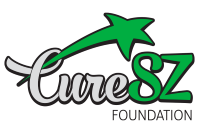
Dr. Henry Nasrallah
Diretor Científico da Fundação CURESZ
As Sete Consequências Catastróficas das Recorrências Psicóticas
It is very unfortunate when individuals with schizophrenia relapse repeatedly. The #1 cause for the recurrence of psychosis is either inconsistent adherence to antipsychotic (AP) medications or total non-adherence (1). The reasons for poor adherence in schizophrenia are related to the illness itself, and patients should not be blamed.
Os sintomas da esquizofrenia que levam à adesão (2) incluem: 1) anosognosia, or the lack of insight that one is very sick with delusions and hallucinations, leading to patient rejection of medication 2) Dificuldades cognitivas inclusive comprometimento grave da memória, que levam ao esquecimento de tomar o PA, 3) sintomas negativos, including apathy, lack of motivation (avolition) and loss of the ability to do many things, including taking medications every day, 4) desconfiança que os efeitos colaterais comuns da medicação AP são evidências de envenenamento, 5) Uso de álcool e drogas which are very common in persons with schizophrenia living in the community, and being intoxicated or stoned precludes taking prescription medication. The combination of all those factors inevitably leads to a high rate of medication nonadherence after discharge from the first hospitalization.
Assim como diabetes tipo 1 ou hipertensão, onde os medicamentos devem ser tomados todos os dias ou há risco de recaída, as pessoas com esquizofrenia devem tomar seus comprimidos orais todos os dias sem interrupção. Um estudo publicado mostrou que uma queda de apenas 25% no nível sanguíneo AP (o que significa perder uma dose uma vez a cada 4 dias) é suficiente para causar uma recaída na esquizofrenia (3).
Long-acting injectable (LAI) APs were developed in the 1970’s, precisely to solve the problem of non-adherence with oral medication. However, due to the delay in scientific advances about the brain-damaging effects of psychosis (which appeared 3 decades later), clinicians back then were completely unaware that psychosis is associated with the dangers of recurring psychosis and resultant brain damage. They also believed that patients should “make their own decisions,” despite the well-known fact that the decision-making region of the brain (frontal lobe) is impaired in schizophrenia. Patients were even led to regard LAI treatment as “stigmatizing” and as a “punishment” for multiple relapses, so they resisted the LAIs. Now LAIs are regarded as a most compassionate and effective therapeutic approach to save patients with schizophrenia from psychosis-induced brain damage.
Por volta do ano 2000, pesquisas em neurociência psiquiátrica revelaram que a psicose destrói o tecido cerebral e causa atrofia cerebral (4) devido à neuroinflamação e aos radicais livres (5), ambos os quais danificam a substância cinzenta e branca. A estrutura e a função do cérebro se deterioram a cada recaída psicótica. Isso evita que as pessoas que desenvolvem esquizofrenia retornem à linha de base anterior ao primeiro episódio psicótico (FEP), que é muito trágico para jovens no final da adolescência ou no início dos 20 anos.
A seguir estão 7 consequências catastróficas de episódios psicóticos recorrentes (6) devido à baixa adesão:
- Perda de tecido cerebral e atrofia cerebral e desintegração da extensa rede de fibras mielinizadas (cerca de 137.000 milhas) que conecta todas as regiões do cérebro e cria uma unidade do eu.
- Treatment-resistance patients respond to low doses of AP in the first-episode of psychosis (FEP) but need higher and higher dose with each psychotic relapse until eventually they become completely treatment-resistant (and will need Clozapine, which most patients never have access to). The brain structure deteriorates successively with each episode and that’s why APs that previously worked no longer do so.
- Incapacidade funcional e incapacidade de retornar à escola, faculdade ou ao trabalho, independentemente do que os pacientes estivessem fazendo antes do FEP. Assim, com repetidas recaídas, esses jovens tornam-se totalmente incapacitados em vez de serem membros produtivos da sociedade.
- When individuals with schizophrenia become psychotic and behave erratically, sometimes they are killed by police, and many more are arrested and jailed, and often sentenced to prison. They no longer get admitted to state hospitals (because they have all been shuttered), and so are surrounded by armed guards instead of doctors, nurses and social workers who compassionately provide them with medical care instead of being thrown into a prison with murderers and rapists.
- Muitas pessoas não estão cientes da taxa incrivelmente alta de suicídio entre jovens com esquizofrenia quando recaem. Alguns estudos relatam taxas de mortalidade por suicídio mais de 10.000% (7) em comparação com jovens da mesma idade na população em geral.
- Non-adherence can lead to drug abuse, a chaotic lifestyle and living on the sidewalks of large cities, with risk of becoming victims of crime.
- Psychosis can cause unusual behavior, and poor dress and grooming, which intensify the public’s negative bias against serious mental illness.
No entanto, contra esse resultado sombrio, há esperança e boas notícias para as pessoas com esquizofrenia. A utilização do LAI muito precocemente, ou seja, logo após a primeira internação, pode fazer uma grande diferença na prevenção da deterioração. Existem estudos publicados que relatam que as recidivas no primeiro ano após o FEP se LAIs são iniciadas é 650% menor do que a taxa de recaídas em pacientes recebendo AP oral (8). Eu pessoalmente tive pacientes que não recaíram por 5 anos contínuos após trocá-los por AP injetável. Prevenir recaídas é vital porque pesquisas recentes demonstram que a incapacidade realmente começa após o segundo, não o primeiro episódio de psicose (9). Assim, prevenir o segundo episódio é a chave para a remissão e recuperação da esquizofrenia. Assim, a deterioração e o curso descendente da esquizofrenia podem ser evitados na maioria dos pacientes pelo uso de LAI AP logo após a primeira hospitalização por esquizofrenia (10).
Existem outras vantagens importantes no uso de formulações de LAI de segunda geração. 24 estudos publicados relatam que são neuroprotetor (isto é, ajudam a preservar a integridade do tecido cerebral) (11). Além disso, um estudo de acompanhamento de 7 anos na Suécia relatou que um antipsicótico LAI de segunda geração foi associado ao menor taxa de mortalidade de todas as causas (12). Isso é muito importante, dada a alta mortalidade prematura na esquizofrenia.
In summary, until a cure for schizophrenia is discovered, the best way to give patients a chance to return to their baseline and avoid the tragic, life-altering consequences, is to use second-generation LAIs immediately after discharge from the first hospitalization. Yet, inexplicably, this is rarely done, and 99% of clinicians in the country prescribe pills and do not use LAI APs for several years until patients have already relapsed several times. By that time, the patients have already lost substantial amounts of brain tissue and have become disabled and criminalized and incarcerated. Imagine how much different the landscape of schizophrenia would be if clinicians prevented any further episode of psychosis after the first one. Many young people with a diagnosis of schizophrenia may be able to return to their baseline, further their education, get a job, get married, raise a family and exercise their constitutional right to pursue happiness (13).
Henrique A Nasrallah,
Diretor científico
Referências:
- Valligan DI et al: Os pacientes preferem a adesão 11:449-468, 2018
- Nasrallah HA: Atual Psiquiatria 16:4-7, 2017
- Subotnik KL et al: Am J Psiquiatria 168:286-292, 2011
- Cahn Wet al: Arquiger Psiquiatria 59:1002-1010, 2002
- Kohler-Torsberg O et al: Fronteiras da Psiquiatria 11:1-3, 2020
- Nasrallah HA: Atual Psiquiatria 20:9-12, 2021
- Zaheer J et al: Pesquisa sobre esquizofrenia 222:282-38, 2020
- Subotnik KL et al: Psiquiatria JAMA 72:822-829, 2015
- Taipale H et al: Lancet Psiquiatria 9:271-279, 2022
- Nasrallah HA: Atual Psiquiatria 21:6-9, 2022
- Chen AT et al: Pesquisa sobre esquizofrenia 208:1-7, 2019
- Taipale H et al: Pesquisa sobre esquizofrenia 197:274-280, 2018
- Nasrallah HA e outros: Atual Psiquiatria 20:14-16, 202

